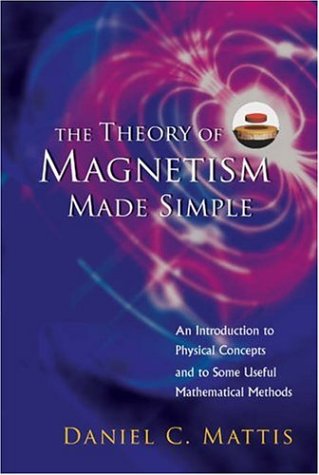Product desciption
The Theory Of Magnetism Made Simple An Introduction To Physical Concepts And To Some Useful Mathematical Methods Daniel C Mattis by Daniel C. Mattis 9789812386717, 9789812385796, 9812385797, 9812386718 instant download after payment.
This new version of a classic updates much of the material in earlier editions, including the first chapter, on the history of the field. Important modifications reflect major discoveries of the past decades. A historical perspective is maintained throughout. The reader is drawn into the process of discovery: starting with a phenomenon, finding plausible explanations and competing theories — and finally, the solution. The theory of magnetism is practically a metaphor for theoretical physics. The very first quantum many-body theory (Bethe’s ansatz) was devised for magnetic chains, just as mean-field theory was invented a century ago by Weiss to explain Curie’s Law. The first two chapters of this book are immensely readable, taking us from prehistory to the “spin valves" of the most recent past. Topics in subsequent chapters include: angular momenta and spin (Chapter 3), quantum theory of simple systems, followed by increasingly technical insights into ordered and random systems, thermal fluctuations, phase transitions, chaos and the like. Contemporary developments in nanotechnology now seek to take advantage of the electron’s spin as well as of its charge. The time is not far off when nano-circuits made entirely of silicon exhibit such many-body properties as superconductivity or ferromagnetism — without any superconducting materials or magnetic ions being present. The reader of this book will be prepared for such exotic twenty-first century applications. Daniel C Mattis, BS, MS, PhD, Fellow of the American Physical Society (APS), is a frequent lecturer at research institutions and the author of several textbooks and numerous research articles. His expertise includes many-body theory, electrical conductivity, quantum theory of magnetism and most recently, nanotechnology. Prof. Mattis is on the editorial panel for high-temperature superconductivity of the International Journal of Modern Physics B and Modern Physics Letters B, both published by World Scientific. Currently serving as Professor in the Physics department at the University of Utah in Salt Lake City, Utah, USA, at various times he has been visiting Professor at Yale University (New Haven), State University of New York (Buffalo), Temple University (Philadelphia), and served as “Wei-Lun Visiting Professor" at the Chinese University of Hong Kong. A founding member of the “Few-Body Physics" section of the APS, he has also served as Chair of the standing committee of the! APS for the “International Freedom of Scientists."


